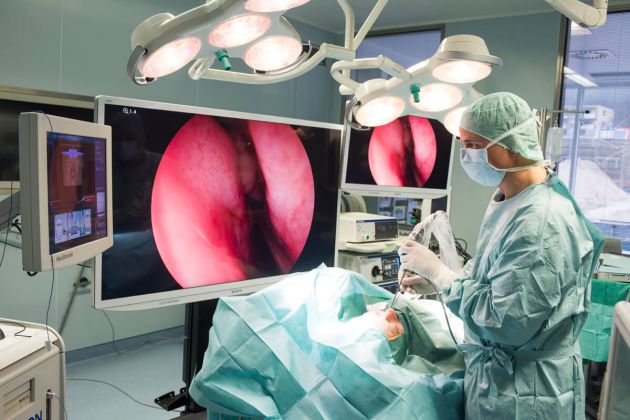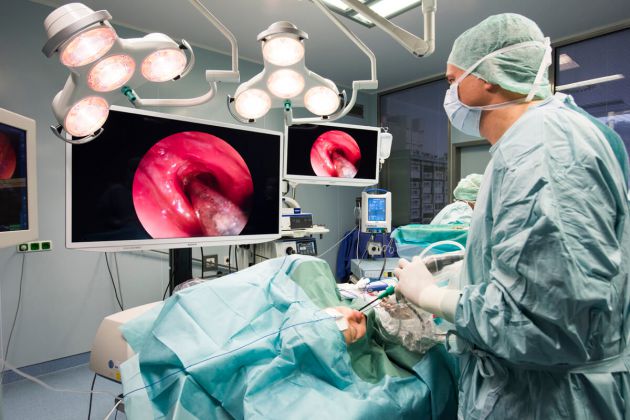4K technology: From the movie screen to the surgical theatre
Dr. Bodlaj uses an endoscopy system with so-called 4K standard in operations in the Lichtenfels clinic – as one of the first to do so in Germany. High resolution images of even the smallest anatomical structures in the ear-nose-throat area increase diagnostic accuracy and influence the planning of treatment for the widest variety of diseases decisively.
Dr. Bodlaj, along with Professor Arens of the ENT University Clinic of Magdeburg is the first ENT specialist in Germany who is putting this system into use.
Along with the considerably higher resolution, the considerably expanded colour range plays a decisive role. In nasal sinus surgeries, especially, this allows a considerably better distinction between diseased and healthy tissue. Even the intraoperative identification of the base of the skull and the eye socket is considerably more precise on a giant 55” monitor in contrast to the comparatively tiny 27” monitor that has been used until now. The safety and quality of the surgery can once again be considerably increased through the use of this technology.
Compared to a high end system of this kind, the conventional surgery that is still seen in many clinics and uses the endoscope directly, without a monitor, seems rather strange.
However, due to the enormous financial expenditure, 4K systems will remain for the foreseeable future available only to a few specialised departments that know how to put the advantages they offer to good use.
What about 4K?
Until recently Full HD was the standard for the highest available image quality in the movie theatre and the TV at home. With the introduction of so-called 4K-technology, its successor is already prepared to eclipse everything that’s been before. Even a sober look at the technical data lets one see what kind of revolution is coming. In the following is a brief comparison:
- The “classic” PAL-resolution of the conventional TV format of the past is 720 x 576 pixels which yields 414,720 image points, corresponding to 0.5 megapixel.
- Full HD with a resolution of 1,920 x 1,080 pixel yields 2,073,600 image points and therefore 2 megapixels.
- 4K by way of contrast creates, with its 4,096 x 2,180 pixels yielding 8,929,280 image points, which corresponds to nearly 9 megapixels.
- Consequently 4K has 4x greater resolution than Full HD and 16 x greater than PAL!
Up to a few years ago, such high resolution was reserved only for digital cameras and there only for taking still pictures. Generating and recording videos with 50 images per second in that kind of high resolution assumes extremely rapid image processing of gigantic amounts of data. We can thank a joint venture by Sony and Olympus form making this high end technology finally available to medical technology.
Dr. Bodlaj had given a lecture on this topic at the 87th annual meeting of the German Society for Ear-Nose-Throat Medicine, Head and Neck Surgery e.V. on May 7, 2016 in Düsseldorf. See also: www.hno.org
Watch also the following videos to get an impression of the groundbreaking quality of the 4K system!






